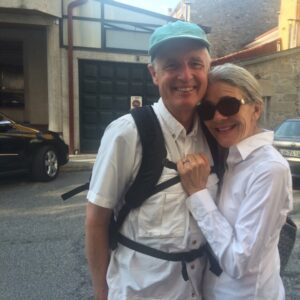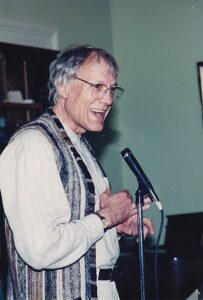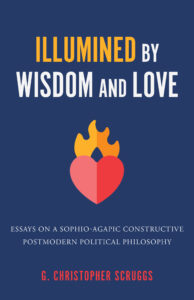 Many years ago, I became a Christian. Within a few months, I had adopted the spiritual practice of daily quiet time. Like many Christians, I began by reading devotional guides recommended by pastors and more experienced Christians. I then began reading through the Bible. I started reading a chapter of proverbs every day in a moment of conviction that I was foolish. Since 1977, almost without fail, that has been my spiritual practice. About two decades ago, I started reading a devotional guide for pastors based on the dictionary readings for the week. Because I was not a lectionary preacher, this meant that I would always be studying and meditating on some scripture unrelated to any sermon being preached for that week.
Many years ago, I became a Christian. Within a few months, I had adopted the spiritual practice of daily quiet time. Like many Christians, I began by reading devotional guides recommended by pastors and more experienced Christians. I then began reading through the Bible. I started reading a chapter of proverbs every day in a moment of conviction that I was foolish. Since 1977, almost without fail, that has been my spiritual practice. About two decades ago, I started reading a devotional guide for pastors based on the dictionary readings for the week. Because I was not a lectionary preacher, this meant that I would always be studying and meditating on some scripture unrelated to any sermon being preached for that week.
 Eventually, this led to my first two books: a meditation or Christian version of the Tao called CenteredLiving/Centered Living: The Way of Light and Love and an introduction to wisdom literature for Christians entitled Path of Life: The Way of Wisdom for Christ Followers. [1] In particular, Centered Living/Centered Living was written when I had to make tough decisions under tremendous pressure and simultaneously overcome habitual anger and over-functioning. I still read that book when faced with difficult choices.
Eventually, this led to my first two books: a meditation or Christian version of the Tao called CenteredLiving/Centered Living: The Way of Light and Love and an introduction to wisdom literature for Christians entitled Path of Life: The Way of Wisdom for Christ Followers. [1] In particular, Centered Living/Centered Living was written when I had to make tough decisions under tremendous pressure and simultaneously overcome habitual anger and over-functioning. I still read that book when faced with difficult choices.
A Word from God to a Young Man
This week, my quiet time includes a verse that meant a lot to me during a career crisis when I was young, inexperienced, and foolish:
I was young, and now I am old, yet I have never seen the righteous forsaken or their children begging for bread. They are always generous and lend freely; their children will be a blessing”(Psalm 37:25-26).
A few weeks ago, another of my favorite readings from my young adulthood was part of the daily reading:
I will instruct you and teach you in the way you should go; I will counsel you with my loving eye on you. Do not be like the horse or the mule, which have no understanding but must be controlled by bit and bridle, or they will not come to you. Many are the woes of the wicked, but the Lord’s unfailing love surrounds the one who trusts in him (Psalm 32:8-10).
I cannot tell you how many times over the years I have pondered these verses and tried to implement them in my life and the life of our churches.
Fruit of the Search
When I first read these verses, I was young and did not know which way to go. Today, I’m in my mid-70s. I still have to remind myself not to be like a horse or mule! Listening to God and hearing his voice so that he may instruct you in the way you must go is not necessarily easy, especially for those of us who are aggressive and hyperactive. Kathy and I’ve been through some pretty challenging circumstances over the years, but our family has been fed, and our children are grown, and they are a blessing. God has been faithful to his promise even when we were not wholly faithful to God.
When one looks back upon a career in ministry, there are so many blessings to remember that recounting one of those blessings seems unfair to the many people who have shared their lives and their faith over the years. Relevant to today’s blog is one of the most critical moments of my professional life.
I was during my last call. The leadership team was making some tough decisions. I did not know what to do and was pretty discouraged. At a moment of crisis, one of the elders looked at me and said, “Chris, you are a wise man. What do you think?” It was as if he was assuring me that God promises wisdom to those who seek it, and after years of reading proverbs and other scripture every day and praying for wisdom every day, after years of failure as well as success, after times of suffering as well as happiness, we think you should advise us.”
In retirement, hardly a week goes by when I do not remember that elder and his words and encouragement that the life of faith is not lived in vain. By the way, the night that elder asked for my advice, there was a long discussion. In the end, leadership made a difficult decision.
Over the years, we’ve all had reason to wonder if it was right or wrong. Many leaders feel it necessary to defend their decisions because leaders must make the right decision. (Indeed, people who constantly make bad decisions cannot be leaders.) But it’s also true that every leader has made bad decisions. What makes the difference between a good and an average leader is the willingness to keep an open mind, to be willing to change, and to be more than willing to admit when you were wrong.
Where We Go from Here
This week, I planned to start a multi-week exploration of “Engaging the Powers, “ the final book in Wink’s Powers Trilogy,” which includes Naming the Powers: The Language of Power in the New Testament, Unmasking the Powers: The Invisible Forces that Determine Human Existence, and Engaging the Powers: Discernment and Resistance in a World of Domination. [2] Unfortunately, doing justice to Engaging the Powers will take longer than I expected, and I have decided to postpone it for another day—but I am confident that it will be reviewed in 2025, if possible. (It’s important to note that Wink convincingly argues that one cannot engage the powers and principalities on their own terms. They must be engaged through Christ by prayer and other spiritual disciplines.)
Next week, aligning with some responsibilities I’ve taken on, I plan to begin a deep dive into the subject of “Emotionally Healthy Leadership.” This series of blogs will flow from Peter Scazzero’s work in this area but will also include some of my personal experiences and ideas relevant to the theme of the week. I hope it will be helpful to readers.
Often, laypeople do not think of themselves as “Christian leaders.” Yet, we are all leaders somewhere: in our families, among friends, in congregations, in small groups, at work, and in our communities and neighborhoods. The question is, “Are we leading in a wise, loving, and Christ-like way? ” Finally, there are no completely wise, completely loving, or completely Christ-like leaders. There are no entirely emotionally healthy leaders. We are all a work in progress.
Copyright 2025, G. Christopher Scruggs, All Rights Reserved
[1] Path of Life: The Way of Wisdom for Christ Followers (Eugene, OR: Wipf & Stock, 2014) and Centered Living/Centered Leading: The Way of Light and Love Rev. Ed. (Memphis, TN, Shiloh Publishing, 2016)
[2] Walter Wink, Naming the Powers: The Language of Power in the New Testament (Minneapolis, MN: Fortress Press, 1984), Unmasking the Powers: The Invisible Forces that Determine Human Existence (Minneapolis, MN: Fortress Press, 1986), Engaging the Powers: Discernment and Resistance in a World of Domination Minneapolis, MN: Fortress Press, 1992).



